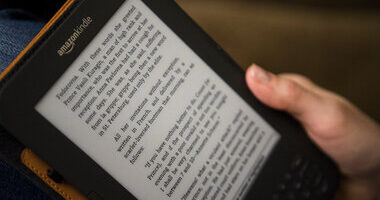In the evolving landscape of publishing, the rise of digital books has significantly changed how authors earn money. One of the most popular platforms for e-books is Amazons Kindle. Aspiring and established authors alike frequently ponder the financial return when their books are purchased on Kindle. Understanding the earnings from Kindle purchases requires an exploration of various factors including royalty rates, pricing strategies, and the nature of the publishing agreement, whether through traditional publishing or self-publishing.
Royalty Rates and Pricing
When an author decides to publish a book on Kindle, the primary determinant of their earnings is the royalty rate. Amazon offers two main royalty options for authors: 35% and 70%. The rate applicable depends significantly on the books list price, the territories in which it is sold, and adherence to specific Amazon guidelines.
1.
70% Royalty Rate
: This rate is available for books priced between .99 and .99. To qualify for this higher rate, the book must be priced at least 20% below its list price on any other digital platform. Additionally, this rate is only applicable in certain countries, including the U.S., Canada, U.K., Germany, India, among others. Under this option, the author also bears the cost of delivery, which is deducted from the royalty. The delivery fee depends on the file size of the book.2.
35% Royalty Rate
: This rate is applicable to books priced outside the .99 to .99 range or in countries not covered under the 70% royalty option. There are no delivery costs deducted under this plan.Self-Publishing Versus Traditional Publishing
The mode of publishing also affects how much authors earn from Kindle sales. Self-published authors who use platforms like Kindle Direct Publishing (KDP) have control over their pricing, which directly influences their royalties. They receive the full percentage of the royalty rate they qualify for, minus any applicable charges like delivery fees.
Traditional publishing, on the other hand, typically involves the publisher setting the books selling price and taking a significant portion of the royalties. In a traditional setup, authors may receive a smaller percentage of the sales from digital formats compared to print sales. It is not uncommon for authors under traditional contracts to earn between 10% to 25% of the net receipts from e-book sales.
Additional Considerations
Beyond royalty rates, several other factors can influence an authors earnings from Kindle sales:
–
Marketing and Promotion
: Successfully marketing a book can lead to higher sales volume, which can significantly impact earnings. Self-published authors need to be proactive in promoting their books to maximize their visibility and sales.–
KDP Select
: Authors who choose to participate in the KDP Select program agree to make their e-book available exclusively through Kindle for a period of 90 days. In return, they gain access to promotional tools like Kindle Unlimited and Kindle Owners Lending Library, where they earn money based on how many pages of their books are read.–
Taxes and Withholdings
: Authors must consider the impact of taxes on their earnings. Depending on the authors country of residence, Amazon may withhold a percentage of royalties for tax purposes.In conclusion, the amount an author earns from a Kindle purchase can vary widely. Factors such as the chosen royalty rate, book pricing, the publishing model, and effective marketing strategies all play critical roles. For authors venturing into the world of Kindle publishing, a thorough understanding of these elements and careful planning can lead to more predictable and rewarding earnings from their digital books.
Recommended Resources
The Elements of Style – $9.95
The classic writing guide for clarity and style.
On Writing Well – $15.99
Essential guide to nonfiction writing.
As an Amazon Associate, we earn from qualifying purchases.




Leave a Reply